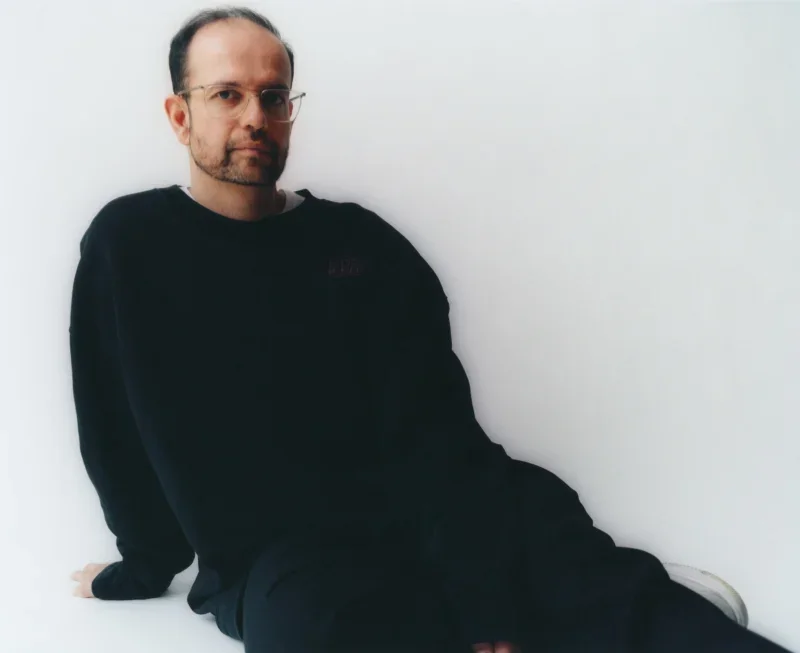The Post-Luxury Masterpiece: Tino Sehgal This Exchange at Frieze London 2025
A previous "constructed situation" by Tino Sehgal. His new work at Frieze London, "This Exchange," operates with a similar focus on live, immaterial encounters.
Amidst the controlled clamor of Frieze London 2025, a peculiar paradox is unfolding. The halls of Regent's Park are, as expected, a cathedral of materiality. Booths overflow with monumental bronze sculptures, vast gunpowder canvases, and installations by the art world's most celebrated names. This is the apex of the art market, a physical testament to value measured in weight, rarity, and seven-figure price tags. Yet, the most urgent whispers, the most intense buzz, are not about an object you can see, but an absence you can feel. The most significant work at the fair may be the one that isn't there at all. This is the central, viral question ignited by Tino Sehgal This Exchange, presented by Marian Goodman Gallery: in a marketplace of multi-million dollar objects, is the most valuable new work an invisible conversation?
This Turner Prize-nominated artist has built a career on what he terms "constructed situations"—live, ephemeral encounters that exist only in the moment of their enactment. For Sehgal, who studied both political economy and dance, visual art is a microcosm of our broader economic reality, a system centered on the production and circulation of goods. His radical practice seeks to reconfigure this system by producing meaning not from materials, but from actions. Tino Sehgal This Exchange is the purest expression of this philosophy. The work’s power is derived not in isolation, but from its context. The hyper-commercialism of Frieze is not merely a backdrop; it is an essential, active component of the piece. The fair’s frantic energy and obsession with objecthood provide the critical pressure that transforms a simple conversation into a profound act of institutional critique. The more opulent the surrounding booths, the more potent Sehgal’s void becomes.
The Rules of Engagement: What Is "This Exchange"?
The artist Tino Sehgal. His practice removes the physical object to place the focus entirely on the human encounter.
To understand this piece of conceptual art, one must first understand its mechanics. There is no painting to observe, no sculpture to circle. Instead, a visitor approaching the Marian Goodman Gallery booth is met by an individual Sehgal calls an "interpreter". This is not a casual chat but a carefully constructed situation. The interpreter initiates a structured dialogue, often beginning with the formal announcement: "This is a piece by Tino Sehgal entitled 'This is Exchange'".
The conversation is built around a specific prompt: the visitor is asked to share their opinion on the market economy, or to discuss the personal value of a recent economic transaction in their life. In some iterations, the piece includes a literal financial component, with the gallery offering to pay the visitor a small sum—perhaps two euros, or half the fair's entrance fee—in exchange for their thoughts. This gesture brilliantly implicates the participant in the very system under discussion, turning their opinion into a tradable commodity. The artwork exists only as this live interaction—a fleeting combination of action, voice, and memory.
The most radical aspect of this immaterial art, however, is how it is acquired. A collector wishing to "own" Tino Sehgal This Exchange purchases no physical object. There is no bill of sale, no certificate of authenticity, no written contract of any kind—an act that directly challenges the art world's foundational reliance on provenance and documentation. The transaction is a verbal agreement, conducted in the presence of a notary. What the collector acquires is not a possession but a set of rules and the exclusive right to re-enact the piece. This transforms the sale from a commercial transaction into a social contract. The buyer becomes a custodian, bound by a ritualistic, oral commitment to uphold the work's conceptual purity. The "object" being transferred is a set of responsibilities, preserved not through climate control but through memory and embodied knowledge passed from person to person.
The Ultimate Post-Luxury Object: Value Without Form
By systematically stripping away every vestige of materiality, Sehgal has created the purest articulation of a post-luxury art object. In an era where traditional luxury codes—defined by opulence, logos, and material preciousness—feel exhausted, a new paradigm of value is emerging. Post-luxury prioritizes meaning, narrative, and authenticity over overt displays of wealth. The new status symbol is not a thing, but "a story made tangible". Sehgal takes this a step further: his work is a story made conversational.
His entire practice can be read as a decades-long experiment in post-luxury principles. He critiques the art world's "excess supply of basic material goods" and proposes a sustainable alternative based on human energy, not natural resources. In a world of infinite digital and physical reproducibility, the truly scarce commodity is a unique, unrepeatable, and undocumented live experience. Tino Sehgal This Exchange offers precisely that. Its value is protected by its absolute ephemerality. The work operates masterfully within the art market's logic—it is sold in editions, represented by a major gallery, and commands a high price—but applies these mechanisms to an "anti-object". This is not a rejection of the market, but a sophisticated internal critique that attempts to change the system from within.
This gesture places him in a lineage of artists who have interrogated the artwork as a commodity. Marcel Duchamp’s Fountain (1917) proved that an artist’s designation could transform a mundane object into art, questioning authorship and originality. Decades later, Yves Klein took this dematerialization further with The Void (1958), an exhibition where he presented an empty, white-washed gallery as the artwork itself, forcing the audience to confront the value of pure space and concept. Sehgal pushes this logic to its ultimate conclusion. Where Duchamp dematerialized the artist’s hand and Klein dematerialized the object, Sehgal dematerializes the gallery itself, leaving only the human interaction. Unlike Felix Gonzalez-Torres’s candy spills, which offer a critique of permanence through a constantly depleting (yet replenishable) physical object, Sehgal’s work never exists as a material thing at all. It is a pure situation, a transaction of ideas that can be owned but never possessed.
Devotion to the Moment: A New Object of Affection
In the philosophy of the Objects of Affection Collection, we believe that the things we value shape our existence. We champion the significance of an artist's intention and the subsequent devotion and care with which we engage their work. With Tino Sehgal This Exchange, these principles are tested and expanded. The "object of affection" is not a physical thing to be possessed, but the fleeting, un-ownable moment of human connection itself.
The artwork dissolves the conventional subject-object relationship, transforming the passive spectator into an active co-producer who "bears a responsibility to shape...the actual realization of the piece". The art is the live encounter. The devotion and care required are not for the maintenance of a material object, but for the intellectual and emotional labor of being truly present. In a culture of perpetual digital distraction, the act of engaging in a focused, one-on-one conversation is a radical one. This recalls the intense connection forged in Marina Abramović’s The Artist is Present (2010), where silent eye contact became a vessel for profound emotional exchange. Yet, where Abramović’s work was a silent communion, Sehgal’s is a structured, verbal interrogation.
This encounter is not simply a benign chat. It is a highly structured use of social interaction to force a philosophical confrontation. The seeming warmth of the exchange is the very mechanism through which the critique is delivered. The visitor is "hailed" into the work , put on the spot, and asked to perform their own subjectivity for the artwork's completion. The intimacy is a tool, making the work's interrogation of our economic lives inescapable and deeply personal.
The Art That Interrogates You
Tino Sehgal This Exchange is far more than a clever gimmick or a piece of esoteric performance art. It is a mirror. Its power lies not in what it is, but in what it does: it reflects our own values, anxieties, and assumptions back at us. The conversation about a personal economic transaction forces an intimate self-interrogation of one's own relationship with capitalism and value. The artwork provides no answers; it only asks questions.
In an age of dematerialization, Sehgal's work suggests the future of art—and perhaps of value itself—lies not in the production of more objects, but in the careful construction of meaningful human encounters. His radical insistence on oral transmission is not merely a critique of documentation; it is a forward-looking proposition. He is stress-testing memory and human-to-human transfer as a primary technology for cultural preservation. In a world entrusting its memory to fragile digital archives, Sehgal posits a radically resilient alternative. He asks a profound final question: What if the most durable way to ensure an idea's survival is not to save it to the cloud, but to embed it in a living chain of human conversations? The answer may be that the future of meaning looks more like the ancient past than the digital present
Authored by Christopher Banks, Anthropologist of Luxury & Critical Theorist. Office of Critical Theory & Curatorial Strategy, Objects of Affection Collection.


